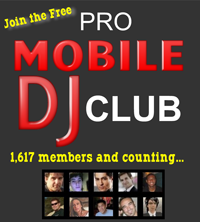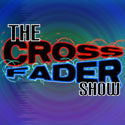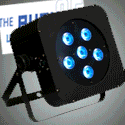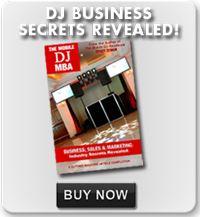By Dave Austin, “Music Professor
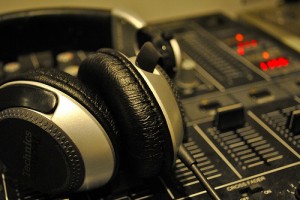 Last month, in Part 1 of this series, I began a discussion of programming with an eye on selecting music to fit your audience.
Last month, in Part 1 of this series, I began a discussion of programming with an eye on selecting music to fit your audience.
However, audiences can vary widely and you may have a group of middle school kids at one event and a senior citizens’ dance at your next.
So, it is critical that you understand your audience and fit your music to their particular tastes.
In practice, most events are likely to involve a group of people of various ages and differing musical tastes.
When doing a wedding reception, you’ll probably have children, teens, contemporaries of the bride and groom and even grandparents. Thus, the more variety in the group, the shorter your sets should be – three to four songs of a particular genre, typically.
Also, you should be asking yourself, “When’s the last time I played an oldies set, country or current pop set?” With such a varied group, you should rotate your sets more frequently.
Weigh Your Options
It would seem evident that if the DJ kicks off the evening’s dancing with an up-tempo set and everyone remains in their seats, he or she should slow things down or try another genre in order to get people on the floor. However, this does not necessarily mean that a similar up-tempo set will not jam the floor later in the evening.
There are those who have derided the slow song a “crutch” but the fact is, at most events; people are more willing to dance to a slow song rather than a fast one. A good slow song can be your “ice breaker” to get guests on the floor.
You’ll want to try not to play the same song more than once per event. Of course, there’s occasionally a song which your audience may love and their repeated requests will dictate that you give it another spin.
Set Building
Try building some of your sets around a theme or logical flow. For example: begin with “Lady in Red” by Chris DeBurgh followed by “Little Red Corvette” by Prince, “Red, Red Wine” by UB 40, etc. With some thought and planning, you can develop sets which follow a theme or style.
You may want to create a “closing set” utilizing several of your best end-of-night tracks. (example: “Save the Last Dance for Me,” Michael Buble’, “Take Me Home,” Cher, “Last Dance,” Donna Summer, and if you still have older guests, “Goodnight My Love” by Jessie Belvin, etc.)
There is debate, both pro and con, over pre-sequencing sets. Knowing what tracks you’re going to play and exactly when you’re going to play them can result in a clean error-free performance while others say it takes away the spontaneity and creative energy which is likely to develop at the event.
If you feel you need to focus on your stage presence rather than set planning at your event, then pre-planned “buckets” of tunes may be the way to go.
I have a themed event coming up called “Dancing Through the Decades.” (1940s to present) In addition to the historically-based script I’ll be using, I’ll be inserting popular music appropriate to the decade being spotlighted.
Part of my challenge is to involve not only those older folks who’ll be on hand, but also to keep the interest of the younger guests. So, here’s another example of building sets while attempting to assure that everyone gets to enjoy the music.
I want my song selections to be representative of the decade while at the same time giving the guests a chance to get on the dance floor, and just perhaps, relive a few memories. Many oldies – from the 1940s and on – can work well.
Even young people will recognize those older songs which have been used in movies, commercials and TV shows. As a bonus, such songs appeal to multiple generations at once.
Techno. Yes or No?
Because equipment and software technology have become more complex, it can be impossible to juggle several songs, loops, effects, cue points, etc. during an event. There are just too many opportunities for errors, so it may be necessary for you to plan and organize ahead of time.
If you are a DJ whose future depends on near-perfection, or you’re performing complicated sets, this may be an absolute must for you.
Let the Dancing Crowd Inspire You
However, if you’d rather go with the flow of your events, and let the audience and the energy from the dance floor be your inspiration, that can work equally well also. Even if this latter method is more your style, it’s probably still a good idea to have some pre-planned sets to drop when your crowd is ready or if you find yourself in a pinch.
Again, I reiterate the need for being able to read the crowd and adjust your music selections on the fly. So, even though you have some pre-planned sets, be ready to eliminate or substitute tracks to fit your audience.
Plan Ahead
No matter your style, some degree of forethought and planning is necessary for a successful event. Try to get a picture of the audience you’ll be working for.
What is the tone of the event? Will it be a low-key affair or a jammin’ throw down? Question your client about the guest list. What age groups are expected, are they party people? What is the expectation of the DJ?
A good base of such information can prove to be of great value in planning for your next event. Think ahead. Plan ahead. Get creative and please don’t show up and just push “Play.”

